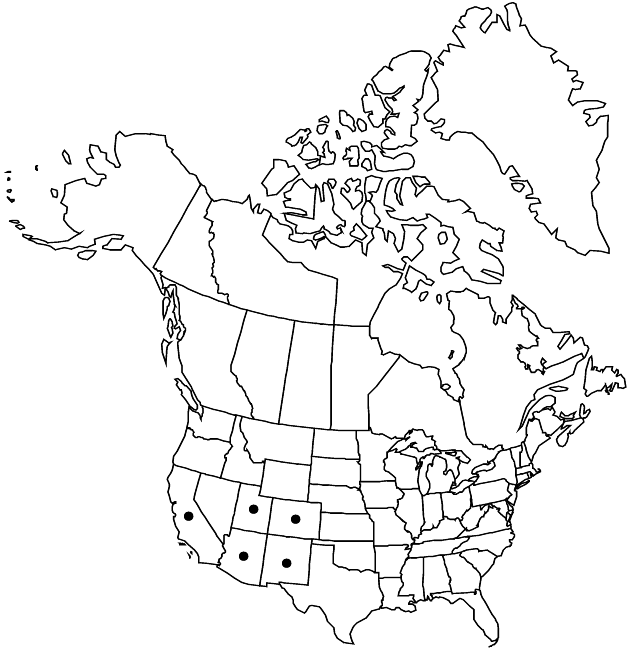Erigeron utahensis
Notes Compositae, 89. 1880.
Perennials, 10–60 cm; taprooted, caudices branched. Stems erect (usually gray-green to whitish, especially proximally), densely and closely strigose, eglandular. Leaves basal (mostly withering by flowering, not forming conspicuous tufts) and cauline (leaf bases broadened or not, not thickened and whitish-indurate); basal and proximal cauline blades linear-oblanceolate to narrowly spatulate, 15–100 × 1–6 mm, cauline gradually reduced distally, ending well proximal to heads, margins entire, faces densely and closely strigose, eglandular. Heads 1–3(–5), from branches from midstem distally. Involucres 5–7 × 7–12(–15) mm. Phyllaries in 3–4 series, loosely hirsuto-strigose, often minutely glandular. Ray florets 28–40; corollas white, pink, or blue, 10–18(–20) mm, laminae coiling. Disc corollas 3–4.6 mm (sparsely strigoso-villous, hairs needlelike). Cypselae 2–2.5 mm, 4(–6)-nerved, faces sparsely strigose; pappi: outer of inconspicuous setae, inner of 20–35 bristles. 2n = 18, 36.
Phenology: Flowering mid Apr–Jun(–Jul).
Habitat: Rocky slopes, cliff bases, ledges, and crevices, sandstone outcrops and terraces, sandy soils, gravelly limestone, shale, cottonwood flood plains, creosote bush, blackbrush, blackbrush–Joshua tree, warm desert shrub, salt desert shrub, mountain brush, pinyon-juniper, oak-maple-aspen
Elevation: 800–2100(–2500) m
Distribution

Ariz., Calif., Colo., N.Mex., Utah.
Discussion
Erigeron utahensis should be expected to occur in southern Nevada.
Selected References
None.
